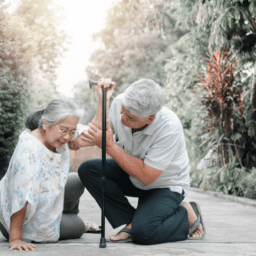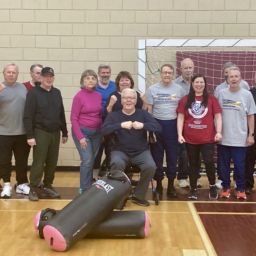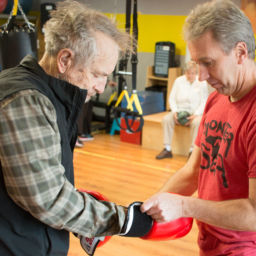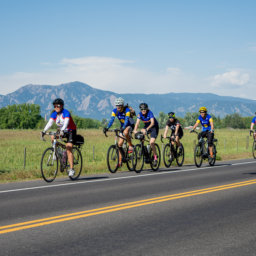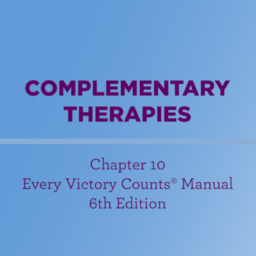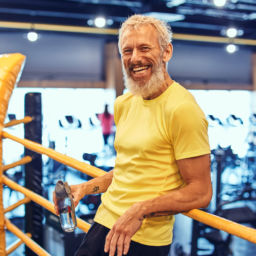We recently had the chance to chat with two of our Davis Phinney Foundation Ambassadors who specialize in working with people living with Parkinson’s. Together they shared their five best tips for the newly diagnosed.
Brett Miller, Rock Steady Boxing coach and wellness professional recommends that people do the following as soon as they’re diagnosed.
#1 - Find a Movement Disorder Specialist (MDS)
Movement disorder specialists focus specifically on conditions that affect movement. They’re not primary care physicians or broad-scope neurologists, but they often work in collaboration with them.
The great thing about many MDSs is that not only do they have a deep understanding of the disease process, but they also tend to understand the anxiety, fear and uncertainty that come with a Parkinson’s diagnosis or a noticeable progression of symptoms. That can go a long way when you’re dealing with something as serious as Parkinson’s.
In addition, while it might be nice if your MDS is the person you see the most, many people see their MDS only once a year or once every two years, and they rely on their primary care physician or neurologist for their more frequent care. If that’s the case, it’s critical to encourage collaboration and sharing of information so as a team they can give you what you need.
The biggest obstacle to finding an MDS, let alone the right one for you, is that MDSs are hard to find, especially if you don’t live in a big city. However, if you want to receive the best care possible, many of my clients find that a road trip or flight to see a good one is well worth it.
#2 - Begin a Daily Exercise Regimen
The second most important piece of advice I’d suggest is to get involved in a daily exercise routine.
According to research, boxing isn’t only an extremely difficult sport to perform, but it shows that when performed correctly (non-contact) under the guidance of a licensed professional, it creates a neurological protective response to the dopamine cell structure that protects and reduces the breakdown of the cell walls.
But, if you’ve never boxed, how and where do you start?
I encourage my clients to attend boxing classes two to three times a week. This may seem like a lot; however, when you experience the benefits—often a reduction in motor and non-motor symptoms—you’ll find you can’t wait to get to the gym.
Many of my clients with Parkinson’s also have other health concerns such as hypertension, cardiac history, diabetes or some long-standing orthopedic issues which makes them think they shouldn’t participate in a boxing class. This isn’t necessarily true. While it’s always important to check with your doctor before you begin any exercise program, once you have been cleared, you may find that regular boxing actually helps reduce these issues. Just be sure to find a coach who has a degree in a medically related field such as exercise physiology or physical or occupational therapy and has the necessary certifications to teach proper boxing workouts. Better yet, find someone who specializes in working with people living with Parkinson’s.
#3 - Find Your Community
One of the things people struggle with most (whether they have Parkinson’s or not) is actually taking that first step into a wellness center or boxing facility. It can feel intimidating to start something new; however, once you find the right place and the right people, it will feel like coming home.
Find a place that employs professional, knowledgeable and approachable coaches. Where camaraderie is just as important as the activity you’re doing, and where you meet people who lift you up and you look forward to seeing every day. These places do exist. This kind of exercise combined with the social connection can have a profound impact on your ability to live well with Parkinson’s.
Angee Ludwa, physical therapist and fellow Davis Phinney Foundation Ambassador added two more pieces of advice to the list.
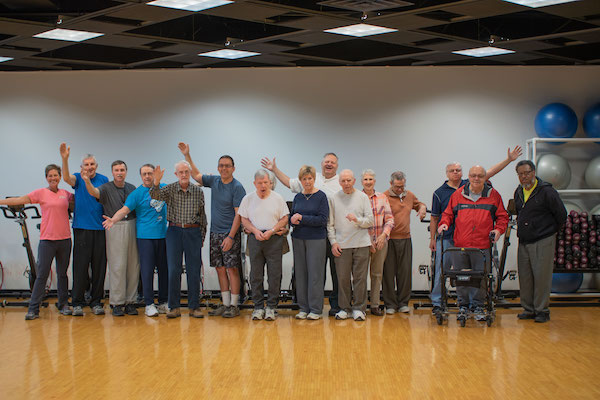
#4 - Connect with an Ambassador
Being diagnosed with Parkinson’s is often overwhelming and many people find themselves asking the question, where do I go from here?
Some people dive into finding as much information as they can and seek out others traveling a similar path. Others completely avoid the topic and isolate themselves. In my experience, it’s the former who have the best chance of living well with Parkinson’s. Fortunately, there are many people who can help you during this journey and play a crucial role as part of your tribe.
The first place I recommend my clients go if they need resources or support is the Davis Phinney Foundation. Their Ambassadors have a wealth of information and are all eager to help in any way they can. There may even be one in your area; however, even if there isn’t, one of them will likely be able to guide you to the resources you need. As an Ambassador living in Michigan, I have had phone conversations with people in Chicago and Ohio and beyond.
#5 - Build Your Parkinson’s Care Team
Building a solid care team can be the difference between just getting by and thriving with Parkinson’s.
An ideal Parkinson’s care team would include your care partner, MDS, primary care doctor, physical therapist, occupational therapist, speech therapist, nutritionist and maybe a personal trainer or coach. It may take some trial and error to find the right team members—individuals who specialize in working with people living with Parkinson’s and are open to communicating and working together to provide you the best care possible—but it is worth it if you want to live well (and long) with Parkinson’s.
As a physical therapist, I’m always trying to help people connect to ones in their area. Here are a few resources in case you’re on the lookout for a great physical therapist for your care team.
Where to Find a Physical Therapist in Your Area
The American Board of Physical Therapy Specialists
Parkinson’s Wellness Recovery Program
The Parkinson’s Foundation Helpline - 1-800-4PD-INFO (473-4636)
Brett and Angee would love to know, what advice would you add to those who’ve been newly diagnosed with Parkinson’s? Feel free to share in the comments below.
 Brett Miller opened a Rock Steady Boxing affiliated gym (110 Fitness) in 2016 while continuing to provide physical therapy to people with Parkinson’s in their own homes. In 2018, he also opened a wellness center to provide programs for the Parkinson’s community, which is now the largest in the world.
Brett Miller opened a Rock Steady Boxing affiliated gym (110 Fitness) in 2016 while continuing to provide physical therapy to people with Parkinson’s in their own homes. In 2018, he also opened a wellness center to provide programs for the Parkinson’s community, which is now the largest in the world.
As an Ambassador, Brett believes in making the most of each day, and he hopes to bring essential tools to those in his community and share his experience creating comprehensive wellness programs. Learn more and reach out to Brett here.

Angee is a physical therapist and has been practicing for 21 years. About 14 years ago, Angee and a co-worker started to notice an increase in the number of people with Parkinson’s who were being referred to them for physical therapy. After working with the Parkinson’s community, Angee knew that she had found her passion. From that point on, she has been helping people who have Parkinson’s live their best life.
Angee currently works part-time in an outpatient neuro-clinic and works one-on-one for skilled therapy. She also teaches many community exercise classes such as PWR! Moves, Rock Steady Boxing, cycling and pole-walking. Learn more and reach out to Angee here.
Want More Practical Articles Like This?
Much more can be found in our latest edition of Davis Phinney Foundation’s Every Victory Counts® manual. It’s packed with up-to-date information about everything Parkinson’s, plus an expanded worksheets and resources section to help you put what you’ve learned into action.
Request your copy of the Every Victory Counts manual by clicking the button below.











